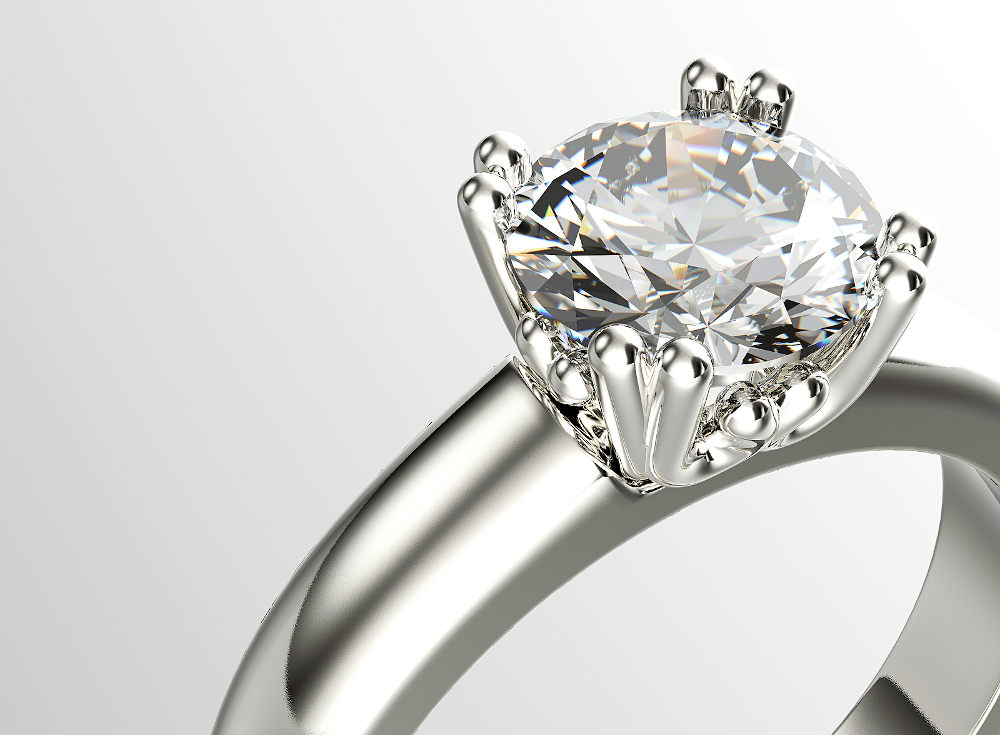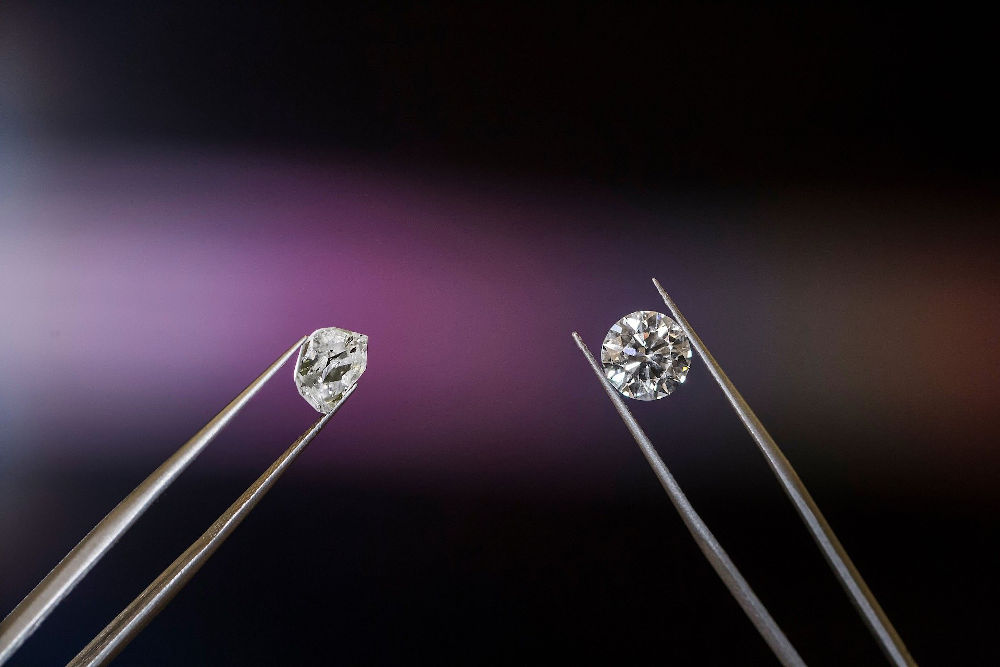The word ‘clarity’ means clearness or translucency in everyday life, but it takes on an added lustre when it is used in the diamond trade. When grading diamonds, even amateurs know that the ‘four Cs’ are the main factors to look at: carat, colour, cut and, of course, clarity. Carat refers to the weight and size of the stone, colour is self-explanatory, and cut refers to the shape the stone has been cut into, usually to disguise any flaws or to enhance exceptional quality. But what is it about diamond clarity that makes it so important?
How is clarity ascertained?
There are scales of clarity with diamonds, but the differences between one stone and another can be so subtle that a layman would be hard pressed to tell why one sample is valued so much more than another. Stones are graded based upon a careful examination by a jeweller at ten times magnification.
As often a setting can disguise flaws in a stone, the examination will usually be made of the loose diamond, which is placed, face down (on what would be the ‘top’ when the diamond is mounted in a ring) on a piece of pure white paper. This also helps to ascertain the true colour gradation. You can learn more by reading this clear and detailed impartial diamond clarity guide on diamond and jewellery forum by Pricescope.
Grading
If a diamond is found to have no visible flaws at the x10 magnification, it can be said to be Internally Flawless/ Flawless, which is shortened in the industry to IF/F. The magnification will be increased as the jeweller seeks to find out just how good the diamond is, with IF/F perhaps being replaced with the next step down if even the tiniest flaw is spotted.

The next step down is for a diamond to be labelled as VVS1 – Very Very Small Inclusion (first degree). These stones look perfect under x10 magnification, but the tiny flaws show up with a little more magnification.
Next comes, VVS2 – Very Very Small Inclusion (second degree). These diamonds still look perfect to the naked eye, but the jeweller might just about be able to see that there is something there with x10 magnification that bears close examination. If they are visible under x10 magnification, they are very small and hard to spot, needing careful checking and an increase in magnification to confirm the classification.
Very Small Inclusions (first degree) (VS1) are very similar to the latter, but are easier to find, although still requiring several seconds careful perusal, and an increase in magnification to confirm.
Very Small Inclusions (second degree) (VS2) have inclusions that are fairly obvious to the jeweller at x10 magnification. The inclusions may be quite hard for even a practiced jeweller to spot, depending on the skill of the cutter.
Small Inclusions (first degree) or SI1 diamonds have inclusions or flaws that are easily discernible at zero magnification, unless the stone has been cut into a square-cut design, such as the Emerald or Asscher Cut in which case the jeweller might take a moment to spot the problems with the naked eye.
SI2 (Small Inclusion – second degree) diamonds are similar to the above, with the exception that the flaws are clearly visible to the naked eye, even when disguised with a flattering cut.
Next, there is Included (first degree) or I1 diamonds which contain flaws or inclusions that are fairly clearly visible to the naked eye, and light reflections thrown out by the stone onto the paper may be visibly deformed by the inclusion/ inclusions.

Finally, there are stones graded at Included (second degree) and Included (third degree) I2 and I3, in which the flaws are clearly visible to the naked eye and are often unsightly. These diamonds are generally not available for sale. These diamonds have a high risk of breakage due to the internal flaws, and thus are not a good investment either as a form of currency (due to their relative low value as well as the risk of splitting or chipping) or as a gemstone.
So why is clarity so important?
It may seem that there is not very much difference between the gradations, except, perhaps, for the lower one or two gradings in which the diamonds are visibly flawed or subject to weakness, but in fact the better the clarity, the higher the value of the diamond.
If you are buying a diamond because you have always wanted one and will be setting it in a colourful setting (for example, yellow gold, rather than the recommended white) you can opt for a less than perfect diamond. But if you are investing in diamonds and want to ensure that your investment will stand the test of time, your best bet lies with high clarity diamonds, preferably rated to the specifications of the GIA and the AGS.
The GIA is the Gemological Institute of America, and they came up with the four Cs of diamond grading, while the AGS is the American Gem Society which sets the standards to which diamond dealers are expected to adhere. Finding a diamond certified by either or both of these institutions will guarantee that you have found a reputable stone.






















